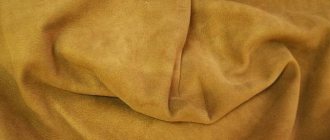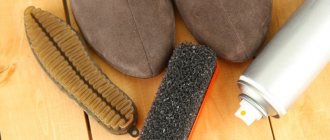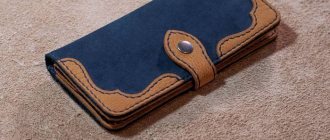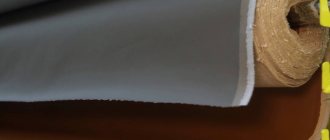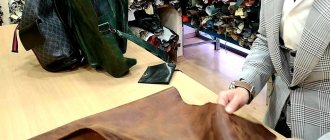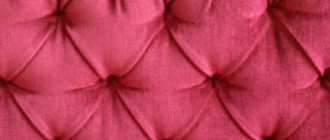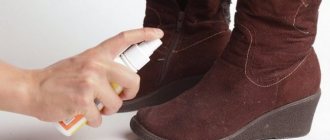Split leather: what kind of material?
To understand what split leather is, it’s worth getting a little acquainted with the process of tanning hides. Typically, the thickness of untreated skin is from 4 to 8 mm, which does not allow it to be used for sewing products. To adjust the raw material to the desired size, the skin is sawn into several layers. The result is one outer cut of smooth skin and one or more inner layers.
The inner layers are split wood and are divided according to characteristics and qualities. In appearance, the material is porous, loose, with a small pile, reminiscent of suede. It is difficult to call raw materials completely natural, since during the processing process they are coated with special compounds to improve their properties.
General information
The yield is usually 3-6 layers, which are then used for various purposes. The cost and method of using such textiles may vary, depending on the proximity to the upper thickness. The first layer, which has a natural pattern, is used to make expensive jewelry, shoes and clothing. The middle layer is used for the production of cheaper models, having been pre-treated. The remaining layers are used to produce collagen-containing products and adhesives.
What kind of material is split wood?
The material having the upper natural structure and formed after cutting the raw material is called leather. Everyone remembers how much natural sheepskin coats weighed. Today, fur products are soft and light, thanks to the use of shearing technology. With its help, previously impossible properties are obtained and the material can be used in various fields.
REFERENCE! For example, material like calf is obtained from beef skin, from which a large number of accessories are made (covers, business card holders, belts, wallets, etc.), bags, backpacks, suitcases.
Split leather, what kind of material - properties
When removing the surface, factories do not throw away the residue.
They apply special glues and resins on top, with the help of which the natural pattern is recreated and the pressed leather has the same characteristics as uncut leather. The only thing is that if the top is polished, the air will flow a little worse. It is less durable from the influence of hot steam. When buying a belt, many people pay attention to the fact that its cut has several layers. When making belts, glued fabric is used, because when sanding it is impossible to standardize its thickness.
Production process
Cow or bull hide is used to make good shoes and bags. They are most suitable for this because they do not have a specific odor, are also very durable and have a beautiful structure.
From one canvas comes several canvases of equal size. Manufacturers just have to decide which species will go for what and process them correctly. With the first processing option, natural leather is obtained, and with the second, suede or velor is obtained.
REFERENCE! They are also processed with special means and they arrive ready for the production of inexpensive things.
This technology has several stages:
- Preservation of raw materials to prevent damage during transportation and storage.
- Getting rid of hair, fat, trimming tissue using mechanical action.
- Processing the hide by tanning. The result is a skin with a thickness of 1 to 7 mm, from which it is difficult to make any thing, because it turns out to be thick, rough and difficult to bend.
- Dividing the skin into several layers.
- Coated with polymer impregnations that create protection against water and dirt.
- Getting rid of various imperfections (chips, cracks, abrasions, creases) by grinding.
- Performing embossing using a press with various stamps.
- If necessary, polishing occurs, as a result the pattern may change and the fabric will not be as durable.
- Gluing several layers together to produce three-dimensional items.
Manufacturing technology
The split leather manufacturing process can be divided into several stages:
- Processing and tanning of cattle hides.
- Removing the front layer.
- Chewing is the division of raw leather into layers.
- The layers are impregnated with a special polymer substance to provide additional protection.
- Grinding the surface with a steel plate.
- Emboss outer layer to eliminate scratches and creases.
- Gluing the material to give additional strength, if necessary.
Features of split wood materials
Split leather is not leatherette! They are made from natural skins, therefore they are classified as leather . They are excellent raw materials for haberdashery products.
What is a split
When tanning animal skins, several layers of leather are obtained at once. One of them is split leather panels. They appear as a result of processing and dividing the skin into layers, as well as removing the surface ball.
The thickness of animal skins varies. The number of layers obtained during sanding depends on specific parameters.
The quantity varies from three to six pieces. These balls differ in their properties and ultimate purpose of use. The layers are divided like this:
- facial;
- average;
- mezdrovy (it is also called bakhtarmyany).
The first is used to make leather of the highest quality . It has a natural pattern.
The second (this is the split leather part) also goes to the skin . But it is already lower in quality. For strength, an adhesive coating is applied to the layer. Split velor is also produced from this part . Shoes, mittens and clothing for workers are made from it.
The third layer is intended to obtain the technical substances of collagen products. For example , such as gelatin, glue and others.
Manufacturing process
Natural split wood is obtained from cattle. To make high-quality leather bags, calf leather is used.
The skin of different animals, like the layers, has various properties. Cow and ox hide material is one of the best types. It is odorless, durable and beautiful on the outside.
Visually, you can immediately notice the similarity of split leather with suede or velor. Having treated it with chemicals, the material will be difficult to distinguish from real leather. Since this is an inexpensive material, it is used in the manufacture of economy class bags and shoes.
Production technology
- After the skin is removed from the animal and tanned, a fairly dense layer of several millimeters is obtained. In its natural form, such thick skin is not used for making bags. It is very difficult or impossible to make any object from such a wide layer (4–5 mm). Therefore, take the following steps.
- First, the skin is divided into two layers . After dividing, bags cannot be made because the material is still considered raw.
- The next step is to impregnate it with a thin polymer layer to create a protective film. It protects against dirt, wear and damage. In this form it is very easy to care for the products. You can wipe the white bag with a damp cloth and the surface will become clean. Another advantage of polymer coating is the decoration of the material.
Important
! A well-made bag will have a simply chic appearance.
- Next, manufacturers remove surface imperfections (scratches, folds, etc.) by grinding and embossing. The first method is to press the skin with a heated steel plate, and this helps to smooth the material. The second is that brand logos, etc., are pressed onto the top.
Material properties
Split wood comes in different qualities. Shoes, bags, belts and gloves are usually made from the outer and middle layers, which, unlike products made from genuine leather, are much cheaper. It repels water well and is resistant to chemicals, and is also quite durable. By sanding the fabric is given additional properties, making it look like velor and is used as a lining material or raw material for the manufacture of workwear.
The deeper layers of the raw hide are usually used to make raw materials for the production of glue, gelatin or paint products.
What is velor
Velor is a general name that is used for several exquisite pile materials. Softness, sophistication and, most importantly, fluffiness are what unites them.
Varieties
Leather
The basis for the production of natural velor is also animal skins (pigs, goats, calves).
Today the industry also produces artificial velor , the front surface of which does not differ in appearance from natural one. But from the inside, the difference is obvious, because the inside of artificial velor is made of some kind of fabric.
Fabrics
Velor fabrics are also very popular. They attract with their velvety feel, pleasant to the touch, and comfortable to use.
Yarn
Recently, velor yarn has been in great demand among needlewomen. It is made from various raw materials using pile technology. It is distinguished by its special plush texture, high quality, and ease of use.
Usage
Leather varieties are used in the manufacture of shoes.
Beautiful fabrics are well suited for the manufacture of clothing, upholstery of sofas, chairs, as well as passenger chairs and seats. The high demand of this type is explained by its elegant appearance and effective use.
A variety of products are knitted from yarn: hats, vests, sweaters, soft toys, etc.
Types of split fiber fabric
There are several types of split leather, which differ in origin, production method and quality characteristics.
Cowhide or cowhide
The main type of split leather obtained from cattle leather. Typically suitable for making bags, workwear or gloves.
Golyeva
A cut split is a certain part of a layer of cut skin that is sent for the production of belkozin, a food product used to create sausage casings.
Mezdrovy (bakhtormyany)
The layer that is on the untreated skin is on the reverse side. Commonly used to produce adhesives and collagen dissolving products.
With polyurethane coating
Split leather coated with a polyurethane coating is considered to be of lower quality than polished leather, but in appearance it strongly resembles the outer layer of leather. Things made from it practically do not breathe and quickly become unusable due to the fact that the coating loses its strength and bursts.
Felt split
It can be called a technical type, since it is used for insulating rooms, as well as for the production of gaskets and filters in mechanical engineering. Sometimes shoe insoles are made from split felt.
Split velor
From the name it is clear that the appearance of the material resembles velor. Most often, the raw material for split velor is the lower layers of uncut calf skin. The fabric is slightly denser than velor and is usually used for covering furniture.
Lining
Most often made from pig skins and used for the production of shoe linings and duplicating parts.
SCHOOL OF A COMPETENT SELLER: Split leather. What is it and how is it different from facial skin?
How is leather different from skin?
The best leather is considered to be bovine or cow leather. Among its undoubted advantages are durability, aesthetic appearance and almost complete absence of odor, with the exception of fragrance - quite pleasant and even included in the compositions of some perfumes.
After the skin is removed from the animal and tanned, it is a fairly thick layer of several millimeters. It is clear that it is impossible to sew or make a belt from it.
Ancient Mongol horsemen made armor and shields from this material, which were strong (they were not pierced by arrows) and light. But we live in different times, we don’t need such means of protection. So let's move on to more relevant things.
Full grain leather and split leather: what is it and what is the difference To obtain marketable leather, it requires layer-by-layer separation. The upper part is the front. It has its advantages, but it is not without its disadvantages. All the defects, including folds and scratches received by the animal during its lifetime, are presented here, as they say, obvious. Experienced manufacturers combat them by grinding and embossing. The first method involves pressing a layer of leather with a heated steel plate, after which the material becomes perfectly smooth, “ironed.” The second method is applicable to youth and denim haberdashery: a logo is pressed onto the surface.
Split leather is a layer of natural leather obtained during the tanning process as a result of layering (sanding) after removing the front layer. When sanding, the skin is divided into layers (from 3 to 6, depending on the thickness of the skin), differing in properties and then used for different purposes. There are layers of the front, middle and flesh (or melon). Various high-quality leathers are produced from the grain grain layer.
From the layers of split leather, after applying an adhesive coating (artificial measure), leather is also produced, but of lower quality. Split leather is also used to produce split leather velor for the production of shoes, mittens, and workwear. Hide and split ends are used to prepare technical gelatin, glue and other collagen dissolution products. In ancient Jewish sources, the split is called duhsustus, and mezuzahs were written on it. (wikipedia)
Properties of split leather
However, let's get back to the process. The same area of the skin remains, devoid of the surface layer. This is a split. What is it and how can it be usefully applied? Don't throw it away? Of course not. In essence, this is also leather, and a very good one.
If you polish it, it will look very similar to the front one, except for the natural porous structure that conducts air. It suffers from the effects of hot press, and its strength also decreases somewhat. Since it is impossible to regulate the thickness of the layer (animal skin is uneven), sometimes two layers of split leather have to be glued together in order to maintain the standard parameters of the raw material, which is especially important in the production of belts.
Where is it used?
It is impossible to say about the split leather material that it is some kind of substitute for genuine leather, because it is made from the same skin as the best raw materials for the haberdashery industry. Another question is what it would be more appropriate to use it for.
The front layer has better water resistance, so it is not recommended to sew a raincoat, jacket or shoes from split leather.
Whatever one may say, the surface structure is damaged by the sharp cutting edge of special equipment, and therefore such a product will get wet more strongly. But belts made from this material can be almost as good as those made from full-grain leather, and cost much less. A welder's suit with split leather in the places most vulnerable to sparks and drops will serve perfectly, because, unlike substitutes, genuine leather does not melt and practically does not burn.
However, the products of Turkish leather craftsmen, skilled in fashionable styles, may sometimes not withstand the effects of precipitation, so one must be vigilant in their choice. We can say about split leather that it is the same excellent raw material for the production of suede as full-grain leather; it is not difficult to “fluff” it, and it looks great.
How to distinguish split leather from grain leather
The main difference between split leather and grain leather lies in the reverse side. If it has a uniform fleecy structure, quite smooth, this indicates that a sharp knife of a dividing machine has passed through it.
Looking at the undressed skin, you can understand that its reverse side is dotted with various veins, therefore, when layering, this side will be the reverse side of the split.
If possible, you should also pay attention to whether the leather is single-layer, or whether it is glued together from two thin plates. In the case of a belt, you just need to bend it; the same method is used to determine the naturalness of the raw material. Real skin is smoothed out, and there are no consequences of deformation left on it.
Crushing the product in your hands is also useful for determining the quality of the coloring, because if peeling or bubbling occurs, then the situation is bad.
Return to list
Pros and cons of the material
Split wood has many advantages:
- easy to process;
- outwardly practically no different from genuine leather or suede;
- costs less than natural analogues;
- allows air to pass through well;
- durable and wear-resistant;
- practically does not absorb moisture.
In the process of manufacturing smooth leather, the layers undergo qualitative changes, due to which the material:
- deformable;
- loses elasticity;
- has high rigidity;
- does not retain heat well.
Despite these disadvantages, split leather is considered more practical and durable in comparison with artificial analogues.
Types of layers with descriptions
When sanding the skins, a minimum of 3 layers are obtained:
- facial (upper);
- average;
- mezdrovy (lower, subcutaneous tissue).
The most valuable is the top layer of skin, which is why it is more expensive than the rest. It is distinguished by high quality and natural measure (pattern on the surface). It is the first top cut that is used for sewing leather clothes. This kind of leather is called haberdashery.
The middle layer is different in that the measure is not natural, but artificially applied. This reduces the class and cost of the material, but allows you to externally compensate for the loss of the front layer. Velor is obtained from middle split leather by sanding and smoothing it. Despite the smooth surface it is not waterproof.
The bottom layer is also called melon layer. It is characterized by velvety, lack of elasticity, and loss of its original shape when stretched. During processing, the fibers are broken, making the structure loose. This makes the layer breathable, but at the same time quickly becomes damp and does not dry well. The flesh itself and its small trimmings are used to produce wood glue and technical gelatin.
The melon layer is sanded using a fine abrasive. The result is velor, which is rougher and more fibrous in appearance than suede.
Split wood is divided into types according to the purpose of the material:
| Split leather type | Features of the material |
| Lining | Obtained from pigskin, the price and quality are low, the properties are better than other artificial linings. Wide choice of colors. Used in the manufacture of insoles for shoes, leather and fur products |
| Belt | Dense, springy, has a finishing coating. Used as finishing and duplicating material, cut for belts |
| Shoe | Imitation of smooth leather or suede. Waterproof impregnation and insulation are used in the manufacture |
Where is split wood used?
The material is mainly used for sewing shoes, bags, belts and workwear. If you want to buy a similar product, it is worth studying what features they have.
For shoes
Split leather is used quite often in shoe production. Considering the characteristics of the material, we can say that such products:
- are considered to be of higher quality than things made from artificial raw materials;
- are cheaper than products made from genuine leather;
- look impressive thanks to the velvety surface;
- allow the skin to breathe;
- comfortable to wear;
- tolerate exposure to chemical reagents well.
However, such shoes are considered less durable and do not warm well. Before purchasing split leather shoes or boots, consider the conditions in which you will wear them. For example, demi-season boots for autumn or spring will be less durable, since the material does not withstand moisture and low temperatures. Dry weather shoes, in turn, will last longer.
For bags
Split leather bags are a combination of quality, aesthetics and affordable price. It is quite often used in the production of bags, since its negative characteristics practically do not affect the quality of the products. Products can be found both on sale from global brands and in mass market stores.
Properties of split leather
However, let's get back to the process. The same area of the skin remains, devoid of the surface layer. This is a split leather. What is it and how can it be usefully applied? Don't throw it away? Of course not.
In essence, this is also leather , and a very good one. If you polish it, it will look very similar to the front one, except for the natural porous structure that conducts air. It suffers from the effects of hot press, and its strength also decreases somewhat. Since it is impossible to regulate the thickness of the layer (animal skin is uneven), sometimes two layers of split leather have to be glued together in order to maintain the standard parameters of the raw material, which is especially important in the production of belts.
What is the difference between suede and split leather?
If we compare split leather and suede, we can say that both of these materials are natural and are made from animal skins. The main difference is that suede is made from whole leather, while split leather is made from the middle layer of the hide. As a rule, it is thinner than natural suede, less durable and has practically no stretch.
How to distinguish shoes made of natural suede from shoes made of split leather?
Unscrupulous sellers often pass off split leather as natural suede. As a result, the shoes do not meet the declared characteristics and quickly become unusable. To avoid getting a low-quality product, carefully examine the product before purchasing:
- when compressed, the suede quickly restores its shape, and the split leather retains its wrinkles;
- if the fleecy surface is perfectly flat, it means that you have a split wood cut with a knife;
- if the reverse side is not completely smooth and has veins, then you have suede.
Differences from suede
If you want to understand which is better – split leather or suede, you need to compare the characteristics of both materials. As you already understand, both of them are of natural animal origin - this is where the commonality ends, the differences begin. We will talk about them in more detail.
| Suede | Split |
| Quickly restores its shape after compression | May retain bruises and unevenness |
| The pile is thick, but not fluffy | The pile may become fluffy |
| Made from the top layer of animal skin | The inner layers of leather are used in production |
| The surface is not perfectly smooth | The pile is perfectly even |
| You may notice roughness and veins on the reverse side | The reverse side is also perfectly smooth |
| Made from the skins of large and small livestock by fat tanning | Obtained from double thick skin |
| Very soft to the touch | It is more rigid to the touch |
| Easy to stretch | The surface is loose and difficult to stretch. |
You now know how split leather differs from suede. Buy suede products if you can afford them - they may be expensive, but they will delight you for many years. However, split leather is also very good in its own way. And below you will find reviews: what kind of material for shoes is split wood. You can evaluate the opinions of people who already wear products made from this material.
Here you can see a description of the oil fabric, from which many things are now sewn.
How to distinguish split leather
Quite often, the outer surface of split leather is coated with additional impregnation, making it look like natural leather. Sometimes it is also passed off as nubuck or yufti.
From genuine and composite leather
The main difference between split leather and genuine leather is the perfectly smooth and even underside. Also look carefully at the cut of the material - if you notice lamination, it means that you have glued layers of artificial fabric in front of you. If the outer coating peels off during compression, they want to sell you an item of dubious quality.
Composite leather is made from waste from the tanning industry. Small pieces are glued together and coated with special impregnations. The result is a material very similar to natural leather, which is significantly inferior in quality characteristics. You can easily determine that this is a product made of composite leather, since it is quite rough, has a symmetrical pattern over the entire surface and is very wrinkled.
From nubuck and yuft leather
In fact, nubuck is a special type of suede, only the material is denser and is produced by chrome tanning rather than fat tanning. Unlike split leather, nubuck quickly absorbs moisture, so if you slightly dampen the surface, you will notice that this area has noticeably darkened. In addition, if you place your palm on the surface, the nubuck will quickly heat up, but the average cut of natural leather coated with artificial impregnation will not.
Yuft is a natural, very dense, moisture-resistant and heat-resistant leather. Unlike split leather, yuft is softer and at the same time strong, repels water well and easily restores its shape when deformed.
Application area
When delamination occurs, the structure of the leather is disrupted, so split leather gets a number of disadvantages. They are loose, heavy, and since the fibers remain in the top layer, the split wood does not stretch well and does not restore its shape after deformation. Like the top layer of leather, split leather allows air to pass through, but quickly absorbs and accumulates water vapor; it is less water-resistant and, as a rule, dries worse. Shoe splits are less elastic, strong and durable. The artificial covering of split leather can crack or even detach from the leather base.
To restore the properties of split leather and expand the scope of its application, namely in the footwear industry, it is embossed with a hot press with various additives or impregnations, creating a 100% artificial surface on one side so that it looks like leather. There are many different technologies for applying artificial coating to split leather. As a result, it is almost impossible to distinguish split leather from leather in the finished product. After chemical treatment, split leather is sometimes called "faux-face leather" or coated leather.
With certain processing, split wood may have a coating applied to one side. They are often treated with a polyurethane coating: covering the split leather with a film based on microporous polyurethane. The process of applying foamed PVC or polyurethane films to split ends consists of coating the split ends with an adhesive (usually applied on a roller machine), then the split ends are fed to the film and secured by pressing. Sometimes spraying liquid polyurethene onto the leather is used, which makes it possible to obtain split leather with excellent appearance and physical and mechanical characteristics, but at a higher price.
Thermoplastic, polyurethane and PVC films create a dense surface with good performance. However, the performance characteristics differ significantly from genuine leather with a natural “face”, so this technology allows the production of only inexpensive split leather items.
Another simple technological solution is finishing the split wood with acrylic resins. The finish is applied by sprinkler or spray. After applying one or two primer layers by cutting (pressing), the effect of the front surface is created. Finally, the surface is sealed with varnish. The advantage of this finishing method is its cost-effectiveness. No special equipment is required to apply acrylic resins; standard machines available in tanneries can be used.
Sometimes combined mixtures of polyurethane, acrylic and other substances are used.
Split wood is used to make sports shoes, and is sometimes used in the production of safety shoes.
Intended use: split split lining, which has proven itself as a natural and inexpensive lining material.
The front layer has better water resistance, so a raincoat , jacket or shoes from split leather. Whatever one may say, the surface structure is damaged by the sharp cutting edge of special equipment, and therefore such a product will get wet more strongly. But belts made from this material can be almost as good as those made from full-grain leather, and cost much less. suit with split leather in the places most vulnerable to sparks and drops will serve perfectly, because, unlike substitutes, genuine leather does not melt and practically does not burn.
The split leather for shoe uppers must be completely tanned, not hard to the touch, well cut, and evenly colored. The artificial front surface of the split grain must be unbreakable, smooth or cut in a clear and uniform manner. Split velor should have a short pile of a single color.
Split leather is distinguished by purpose: 1) for heavy work shoes; 2) for civilian shoes; 3) sandal .
The main task of any protective clothing is to reliably protect the human body from the effects of adverse external factors. This problem is solved quite simply - work “uniforms” are sewn from materials that are unconventional for ordinary, everyday clothing. One of these, and not the least popular, is split leather - a material that reliably protects both from high humidity and low ambient temperatures, as well as from short-term direct exposure to open fire.
For use in the production of clothing and footwear, split leather is painted in various colors, special coatings and embossing are applied, and it is finished with PVC .
In the production of workwear, they try to use untreated split wood, because applying a glossy finish will improve the appearance and completely close the natural porosity, bringing the valuable material to the quality level of artificial analogues.
A suit with a split split is applicable in various industries. The specific texture of the material with a slight looseness of the surface gives work clothes a unique charm of strict elegance. Split wood can be combined with fabric elements, the main thing is that the thickness of the parts matches, its absence can lead to deformation.
The hairiness is clearly expressed in varieties classified as split velor. The hydrophobic version is available only in black, while a wider range of colors is available for basic options. boots are precisely oriented towards the soft organoleptic properties of this natural layer.
Split leather is used to produce suits for welders and split leather gloves . split-split welder's suit
Split velor is produced from pigskin, used in the shoe industry. This material is quite actively used in the production of sports shoes, since the foot “breathes” in it. The disadvantage of such shoes is that they get dirty and wet quite quickly.
Split wood in its raw state is used for the production of shoe linings because it is hygroscopic and allows air to pass through well.
Many people know that workwear made from this material, comparable in strength to genuine leather, is very comfortable and can last for many years. But not everyone is able to explain “on the fly”: actually, split grain – what is it and “what is it eaten with”? Everything is very simple - a material that looks and feels strongly reminiscent of genuine leather (more precisely, suede or velor ) is one of its varieties. In tanning, each leather blank is stratified into three layers: the first (upper) is the well-known “natural leather”, the third (lower) layer is usually used as “indestructible” linings for clothes and shoes. But the second, intermediate layer is the split leather.
This material is almost ideal for workwear. shoes with split leather in their “construction” are not only durable and comfortable - they are also beautiful in appearance, since this type of “leather” very reliably imitates the structure of velor. But, oddly enough, beautiful shoes make working much easier! True, although split leather has moisture-proof properties, it is still recommended to work in such shoes in a dry room - leather , as a material, has a porous structure and is quite hygroscopic. Special processing methods make it possible to make it completely waterproof, but this technology is quite complex and, as a result, the final product - workwear - has a high cost.
in a protective suit in the form of reinforcing inserts sewn into “problem” areas - elbows, knees, wrists. This is quite justified - sewing one “robe” requires about 3.5 square meters. m of material, and if you sew it entirely from split leather, the overalls will be very expensive. However, there are exceptions - the best workwear for workers in the metalworking industry is still, despite the abundance of especially durable synthetic materials, made almost entirely from split leather.
Caring for split leather shoes and bags
To extend the life of shoes and bags made of split leather, pay utmost attention to the care of the products:
- after each wear of a pair of shoes, vacuum the products, removing all dirt and dust from the pile, and then wipe the surface with a damp sponge and comb with a rubber roller;
- if the surface of the shoes is wet, comb the fibers with a rubber brush, moving in different directions;
- Regularly clean your products from dust using a short-bristled brush;
- to remove abrasions from the surface, rub these places with an eraser or a velor brush;
- Buy a special spray for cleaning natural leather at a specialized store and use it to remove stubborn dirt from the surface.
Also try not to wear products in rain and mud, otherwise they will quickly lose their attractive appearance.
Split leather is a budget type of genuine leather, which is made from the middle layers of untreated cattle hides and treated with special synthetic impregnations. In terms of its properties, the material is inferior to natural leather and suede, but is cheaper and lasts a long time with proper handling and care.
What is a split?
Split wood is the material from which shoes and some types of workwear are made. It is obtained by dividing animal skins into several layers. For its manufacture, a second layer . The material itself is porous and loose , with a slightly fleecy surface. In terms of its properties, it is more reliable than suede, but not as reliable as full-grain leather.
To give the split wood the appearance in which it appears in shop windows, the material is polished and rolled under a heated press . This procedure improves the appearance of the skin, but reduces its strength and elasticity.
